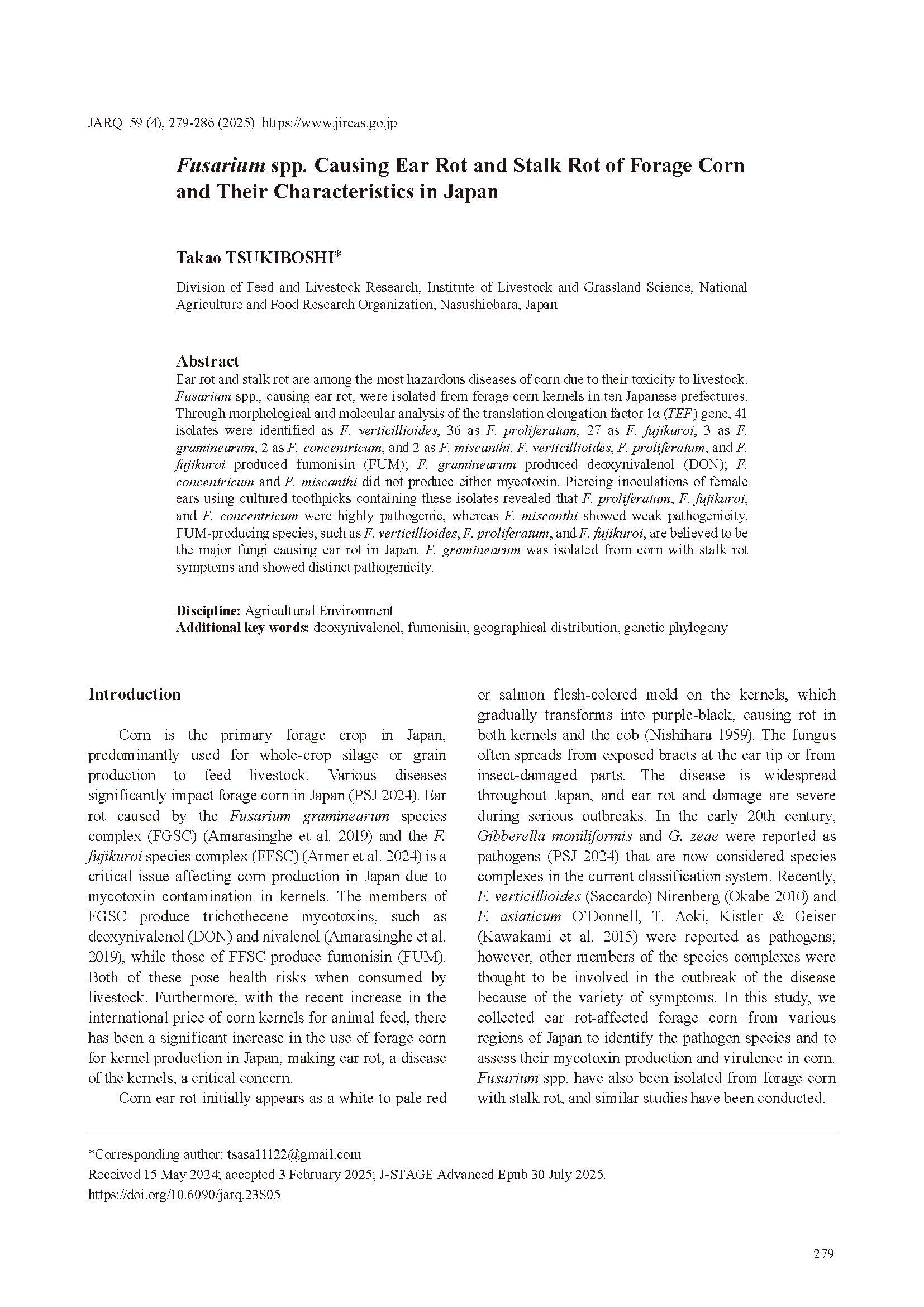Fusarium spp. Causing Ear Rot and Stalk Rot of Forage Corn and Their Characteristics in Japan
JARQ : Japan Agricultural Research Quarterly
| ISSN | 00213551 |
|---|---|
| 書誌レコードID(総合目録DB) | AA0068709X |

本文フルテキスト
jarq59-4_279-286.pdf11.81 MB
Ear rot and stalk rot are among the most hazardous diseases of corn due to their toxicity to livestock. Fusarium spp., causing ear rot, were isolated from forage corn kernels in ten Japanese prefectures. Through morphological and molecular analysis of the translation elongation factor 1α (TEF) gene, 41 isolates were identified as F. verticillioides, 36 as F. proliferatum, 27 as F. fujikuroi, 3 as F. graminearum, 2 as F. concentricum, and 2 as F. miscanthi. F. verticillioides, F. proliferatum, and F. fujikuroi produced fumonisin (FUM); F. graminearum produced deoxynivalenol (DON); F. concentricum and F. miscanthi did not produce either mycotoxin. Piercing inoculations of female ears using cultured toothpicks containing these isolates revealed that F. proliferatum, F. fujikuroi, and F. concentricum were highly pathogenic, whereas F. miscanthi showed weak pathogenicity. FUM-producing species, such as F. verticillioides, F. proliferatum, and F. fujikuroi, are believed to be the major fungi causing ear rot in Japan. F. graminearum was isolated from corn with stalk rot symptoms and showed distinct pathogenicity.
| 刊行年月日 | |
|---|---|
| 作成者 | Takao TSUKIBOSHI |
| 著者キーワード | deoxynivalenol fumonisin geographical distribution genetic phylogeny |
| 公開者 | Japan International Research Center for Agricultural Sciences |
| 受付日 | 2024-05-15 |
| 受理日 | 2025-02-03 |
| オンライン掲載日 | |
| 巻 | 59 |
| 号 | 4 |
| 開始ページ | 279 |
| 終了ページ | 286 |
| DOI | 10.6090/jarq.23S05 |
| 他の資源との関係 | eng |
| 言語 | eng |
